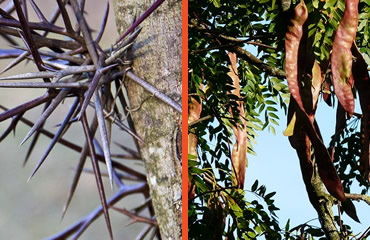Every region has lesser-known high-draw whitetail food sources.
One of the best ways to experience steady deer action throughout a hunting season is to key on the most desirable food sources. The peak appeal of a given source can vary from days to weeks, and the shorter the window, the more intense the action will be.
There aren’t many deer hunters who haven’t heard of or experienced the appeal of acorns, but there are other food sources whose draw is at least as powerful. These can vary by state and even regions within your state, so consult an expert like your local cooperative extension agent to see what foods the deer in your area might be looking for at different times of the season.
An example of one lesser-known food found in many whitetail states is the honey locust. Honey locust trees are considered invasive species at worst, or weed trees at best, so we’re not recommending planting the wild varieties. But the bean pods produced by honey locusts can be a big draw later in the season after most of the acorns have been gobbled up.
It seems like a good, hard frost increases their appeal, the timing of which often coincides with the rut throughout much of the whitetail’s range. If you’re having trouble finding deer during the rut, put a camera in patch of honey locusts.
Honey locust trees are easily identified by the extra-long thorny patches that grow on the trunk. The bean pods average about 6 inches long and turn a dark, coffee brown before falling to the ground.
Get to know the high-draw food sources in your area, and be prepared to move with them – and the deer.
Read Recent Tip of the Week:• Read the Sign! Put some fun back into your hunting by going back to basics.




.png)